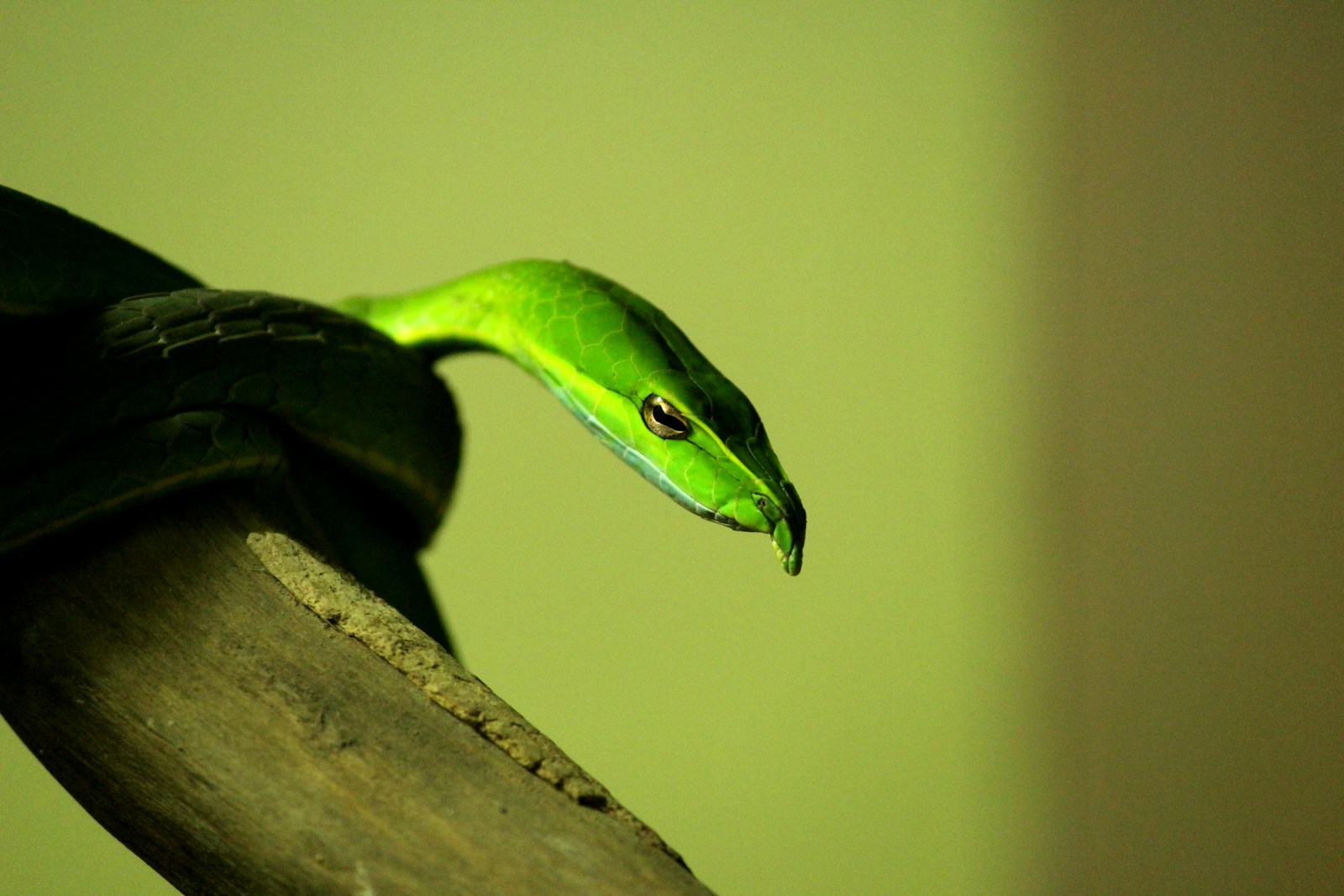In the dense, verdant rainforests of Southeast Asia, a remarkable evolutionary adaptation has developed among certain snake species. The vine snake (Ahaetulla prasina) has perfected an extraordinary camouflage technique that allows it to virtually disappear into its surroundings. By mimicking the appearance and even the movement of vines, these remarkable reptiles have developed one of nature’s most effective defensive strategies. This form of mimicry not only helps them avoid predators but also makes them exceptionally effective hunters, demonstrating the incredible adaptability that has allowed snakes to thrive for millions of years in diverse ecosystems across the globe.
The Master of Disguise: Introducing the Vine Snake
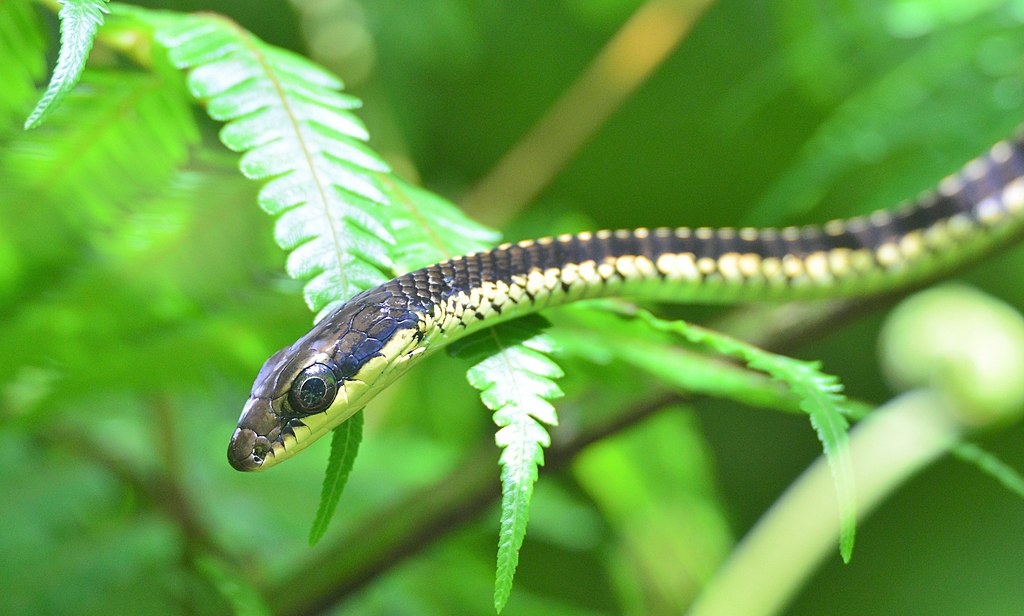
The Asian vine snake (Ahaetulla prasina), also known as the Oriental whip snake, has evolved one of the most effective camouflage techniques in the animal kingdom. These slender, elongated reptiles possess a bright green coloration that perfectly matches the vegetation in their tropical forest habitats. With their incredibly thin bodies rarely exceeding the width of a pencil and growing up to 6 feet in length, these snakes create an almost perfect illusion of being nothing more than another hanging vine. Their specialized body shape represents a textbook example of evolutionary adaptation, where survival pressures have shaped anatomy over millions of years to maximize chances of survival.
Evolutionary Marvel: How the Vine Snake Developed Its Disguise

The vine snake’s remarkable mimicry didn’t develop overnight but rather through millions of years of natural selection. Scientists believe their elongated form evolved gradually as snakes with bodies that more closely resembled vines gained a survival advantage against predators like birds of prey and larger mammals. This process, known as cryptic coloration or mimetic camouflage, represents one of nature’s most sophisticated adaptations. The snake’s peculiar head shape—featuring a pointed snout that resembles a vine tip or bud—further enhances this deception. Fascinatingly, genetic studies suggest this specialized morphology developed independently in several snake lineages across different continents, a phenomenon known as convergent evolution.
Anatomical Adaptations That Perfect the Illusion
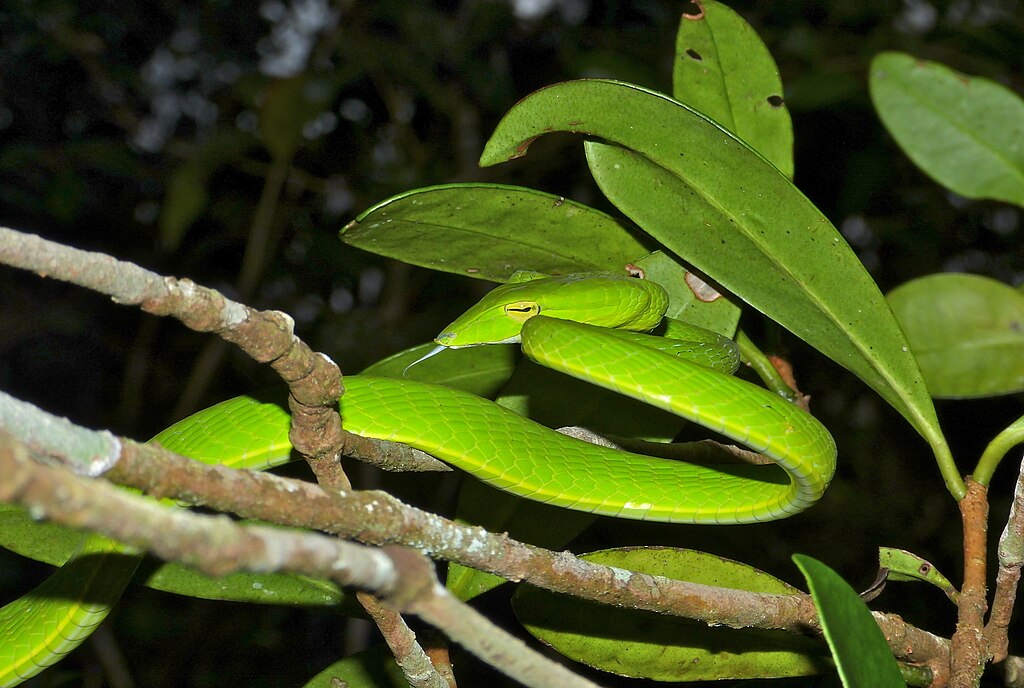
Every aspect of the vine snake’s anatomy contributes to its successful impersonation of vegetation. Their horizontal pupils, unlike the vertical slits found in many other snake species, enhance their daytime hunting capabilities while maintaining the disguise. The snake’s jaw structure has evolved to be exceptionally long and narrow, supporting its vine-like appearance while still functioning efficiently for capturing prey. Perhaps most remarkable is the snake’s skin texture, which features slight ridges and patterns that mimic the texture of plant stems rather than typical reptilian scales. Even their ventral scales are modified to provide better grip for their arboreal lifestyle while maintaining the sleek profile necessary for their disguise.
Behavioral Tactics: Moving Like a Vine in the Wind
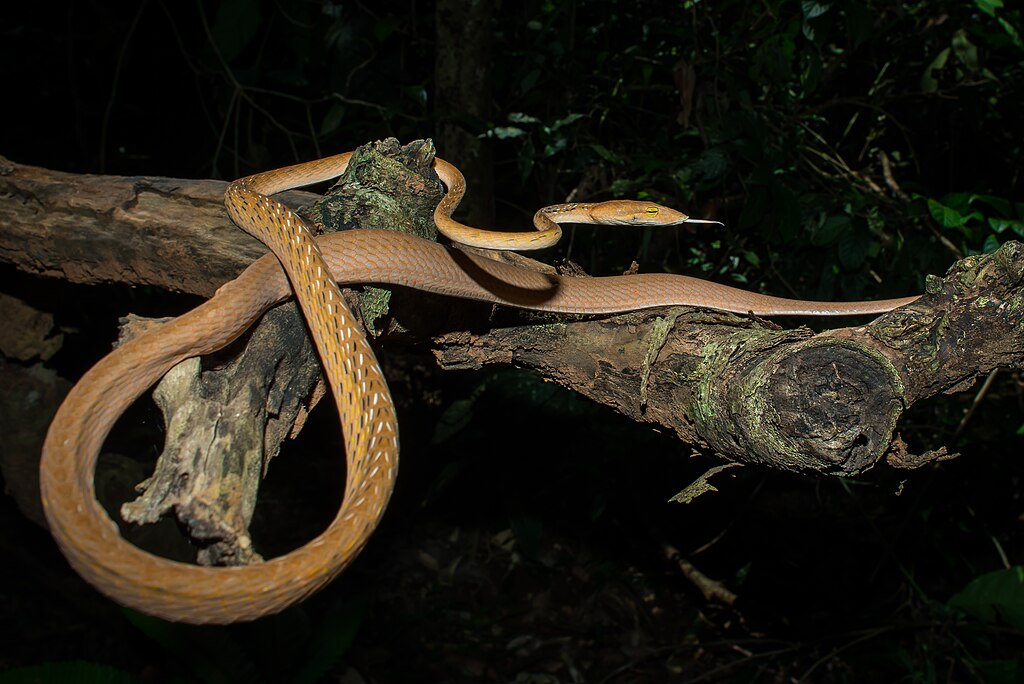
The vine snake’s mimicry goes far beyond mere appearance—these remarkable reptiles have developed behaviors that enhance their disguise. When threatened, rather than fleeing rapidly like many snake species, vine snakes will often remain perfectly still, swaying gently in a manner indistinguishable from vines moving in a forest breeze. This behavior, called oscillatory motion camouflage, makes them nearly impossible to detect even for keen-eyed predators. When they do move through the canopy, they employ a distinctive form of locomotion, stretching their bodies across gaps between branches in a straight line rather than the typical serpentine movement, further enhancing their resemblance to climbing plants. Researchers have documented vine snakes remaining motionless for hours, their bodies stretched between branches, completely indistinguishable from the surrounding vegetation.
Hunting Strategy: The Ambush Advantage

The vine snake’s camouflage serves a dual purpose, protecting it from predators while making it an exceptionally effective hunter. These primarily diurnal hunters specialize in ambushing small lizards, frogs, and birds that fail to recognize the danger hiding in plain sight. With the patience of a statue, a vine snake can remain motionless for hours until suitable prey ventures within striking distance. When the moment arrives, the snake strikes with surprising speed, using its slightly venomous bite to immobilize small prey. Their hunting technique relies so heavily on their camouflage that researchers believe these snakes would struggle significantly to capture prey if their disguise were compromised, highlighting the critical evolutionary importance of their mimicry.
A Specialized Diet for a Specialized Hunter

The vine snake’s diet reflects its specialized hunting strategy and habitat preferences. Unlike many generalist predators, these snakes predominantly target arboreal lizards, particularly chameleons and agamids that share their tree-dwelling habitat. Their slender heads and specialized dentition allow them to swallow prey almost as wide as their own bodies, an impressive feat given their slim profile. Research has shown that vine snakes possess mild venom delivered through enlarged rear fangs, which causes rapid paralysis in their cold-blooded prey but poses little threat to humans. Their dietary specialization represents another example of their highly adapted nature, as they’ve evolved to exploit a specific ecological niche with minimal competition from other predators.
Geographic Distribution and Habitat Preferences
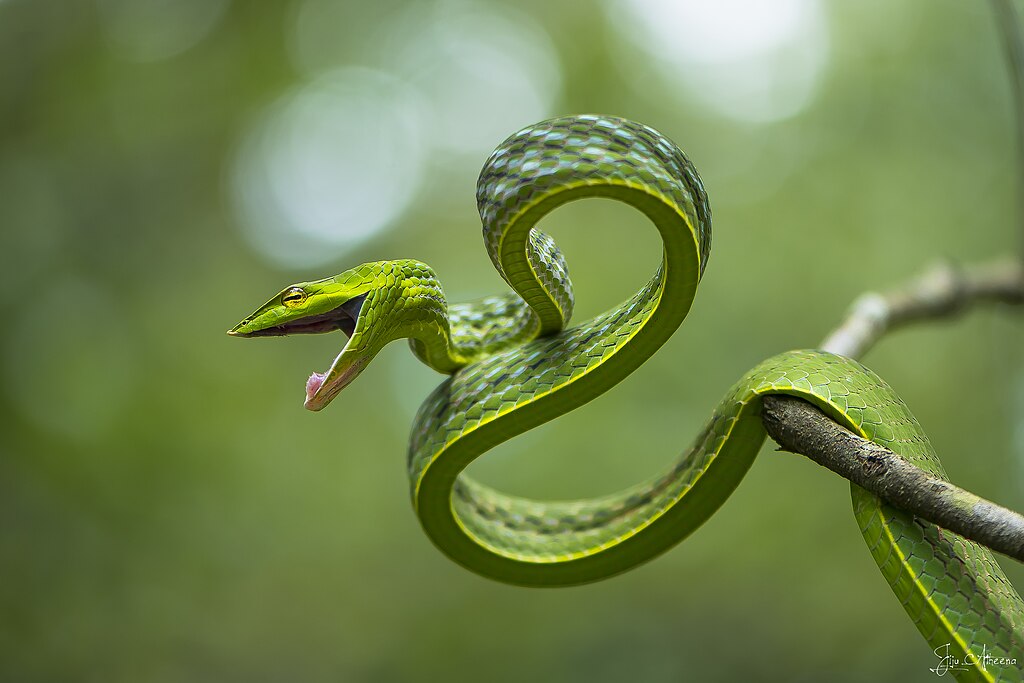
True vine snakes of the genus Ahaetulla are primarily found across Southeast Asia, including India, southern China, Indonesia, and the Philippines, though similar species with comparable adaptations exist in other tropical regions. These snakes display a strong preference for humid tropical and subtropical forests where their green coloration provides optimal camouflage among the verdant canopy. Within these ecosystems, vine snakes typically inhabit the middle layers of the forest, where sufficient vegetation provides both cover and hunting opportunities. Interestingly, researchers have documented slight color variations among populations from different regions, with individuals perfectly matching the specific shade of vegetation in their particular habitat—another testament to the precision of their evolutionary adaptation.
Other Snake Species with Similar Adaptations
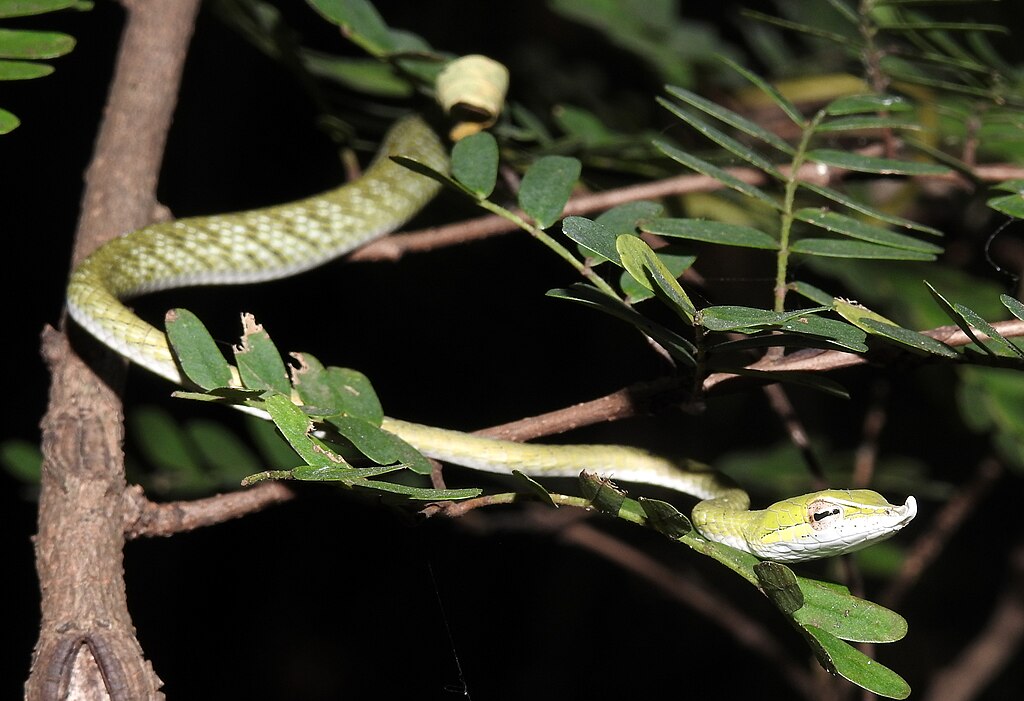
The vine snake’s remarkable adaptation has evolved independently in different snake lineages around the world, demonstrating the effectiveness of this survival strategy. In the Americas, the parrot snake (Leptophis ahaetulla) displays strikingly similar adaptations despite being only distantly related to Asian vine snakes. Africa’s green mamba, though more robust in build, employs comparable camouflage techniques, blending seamlessly with foliage. Even more specialized is the Asian vine snake’s cousin, the ornate flying snake (Chrysopelea ornata), which combines vine-like camouflage with the ability to glide between trees by flattening its body. This convergent evolution across multiple continents highlights how similar environmental pressures can drive the development of comparable adaptations in unrelated species.
Threats to Vine Snake Populations

Despite their remarkable adaptations, vine snakes face significant challenges in the modern world. Habitat destruction poses the most serious threat, as deforestation across Southeast Asia continues to eliminate the specialized environments these snakes require. Climate change presents another challenge, as subtle alterations in temperature and rainfall patterns may disrupt the delicate ecosystems these specialized hunters depend upon. Additionally, vine snakes occasionally enter the exotic pet trade, where their specialized care requirements often lead to poor outcomes. Conservation efforts are complicated by the snake’s secretive nature and the limited research dedicated to understanding their population dynamics and specific habitat requirements across their range.
Studying the Impossible: Research Challenges
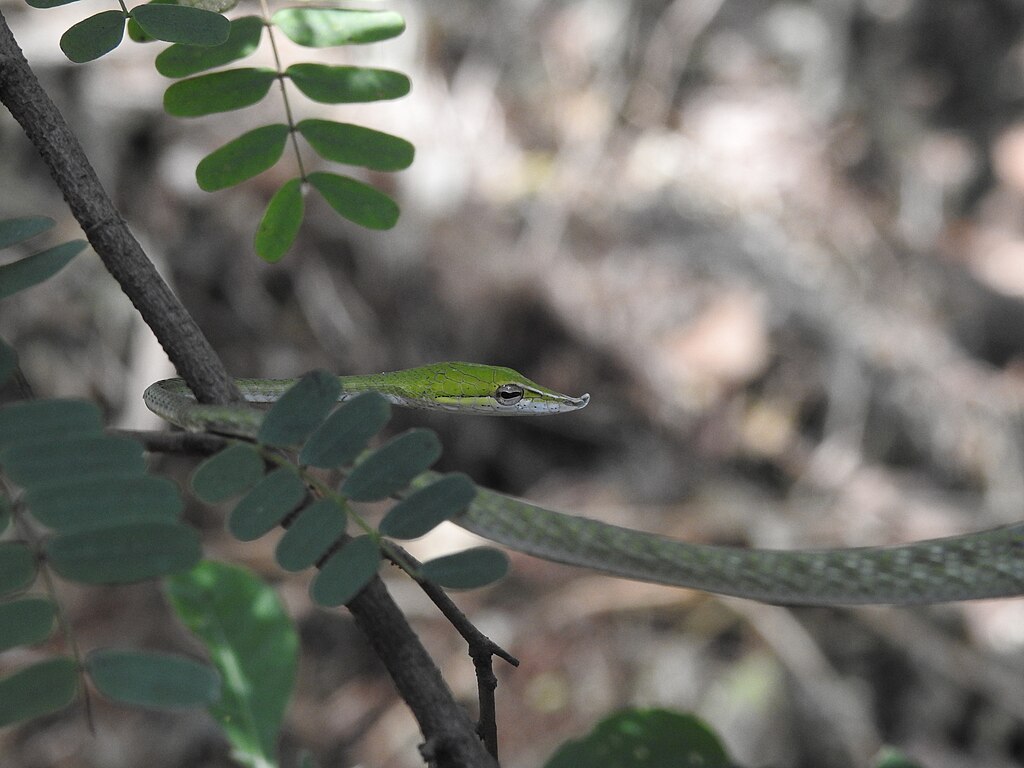
The very adaptation that makes vine snakes such successful survivors also creates significant challenges for researchers attempting to study them. Their exceptional camouflage makes population surveys extraordinarily difficult, as scientists can literally walk past these snakes without noticing them. Traditional research methods like mark-recapture studies yield limited results due to the difficulty in locating specimens consistently. Modern research increasingly relies on environmental DNA sampling and specialized thermal imaging equipment that can differentiate the slightly different heat signatures of snakes from surrounding vegetation. Despite these technological advances, vine snakes remain one of the less-studied reptile species, with significant gaps in our understanding of their behavior, reproduction, and population dynamics.
Conservation Status and Protection Efforts
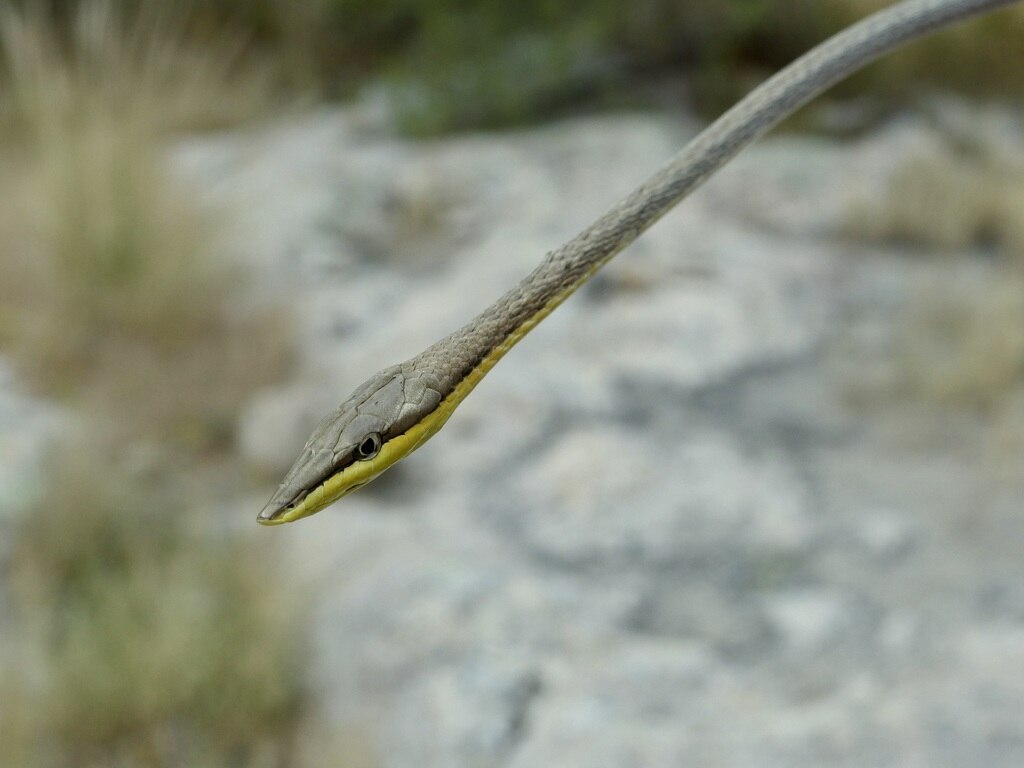
Many vine snake species currently lack comprehensive conservation assessments due to insufficient data on their population trends and distribution. The IUCN Red List classifies several species as “Data Deficient,” highlighting our limited understanding of these remarkable reptiles. Conservation efforts primarily focus on habitat preservation, as maintaining intact forest ecosystems represents the most effective strategy for ensuring these specialized hunters’ survival. In some regions, local education programs work to reduce persecution based on unfounded fears, explaining the vine snake’s ecological importance and minimal threat to humans. Specialized wildlife corridors connecting fragmented forest habitats may prove crucial for maintaining genetic diversity among isolated populations as development continues throughout their range.
Cultural Significance and Human Interactions
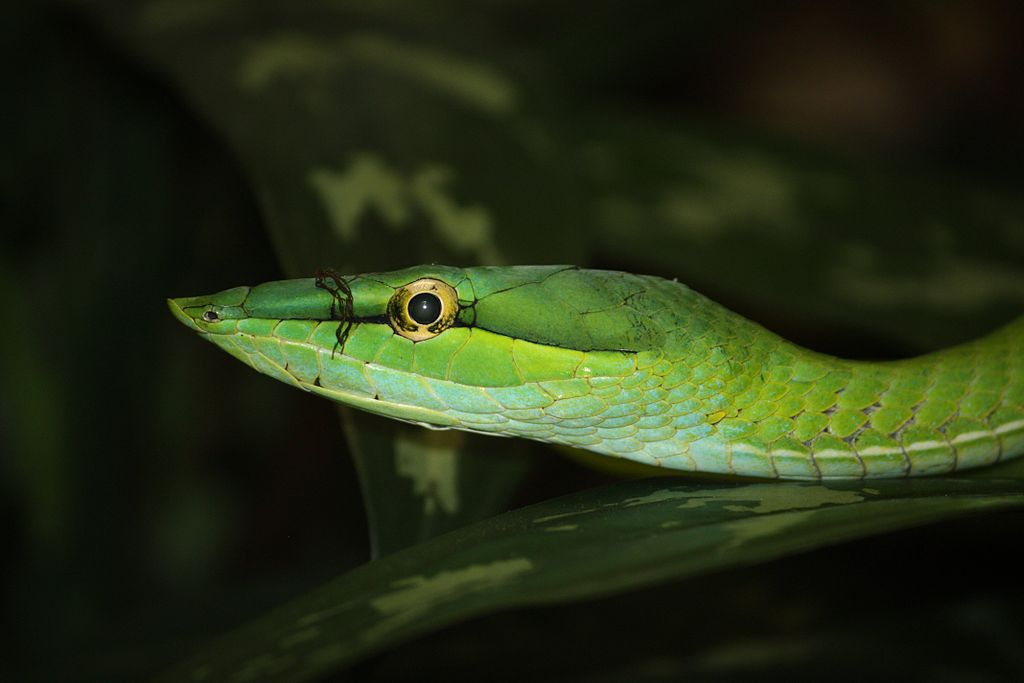
Throughout their range, vine snakes have featured in local folklore and traditional ecological knowledge. In parts of India, these snakes are sometimes called “eye-pokers” due to a misconception that they target the eyes of passersby—a myth likely stemming from their forward-facing eyes and pointed snouts. Despite their mild venom, encounters between humans and vine snakes rarely result in medically significant bites, as these shy reptiles typically flee rather than confront larger animals. In recent years, vine snakes have gained popularity among wildlife photographers and ecotourists, who consider spotting one of these masters of disguise a highlight of jungle expeditions. This growing appreciation may ultimately benefit conservation efforts by raising awareness of these remarkable creatures and their threatened habitats.
The Evolutionary Arms Race: Predator Adaptations

The vine snake’s remarkable camouflage exists within a broader evolutionary context—an ongoing arms race between predator and prey adaptations. Certain predators have developed counterstrategies to detect these masters of disguise. Some forest birds possess exceptional visual acuity and pattern recognition abilities that allow them to occasionally spot the subtle differences between actual vines and their serpentine mimics. Larger snakes that prey on vine snakes may rely more on chemical cues than visual identification, detecting pheromones and other scent markers that the vine snake cannot disguise. Meanwhile, some potential prey species have developed behavioral adaptations, such as systematic scanning behaviors or avoidance of certain vegetation patterns that might indicate a hidden predator. This constant evolutionary push-and-pull continues to refine both the vine snake’s disguise and their adversaries’ detection methods.
Nature’s Perfect Illusion: The Ongoing Evolution of Mimicry
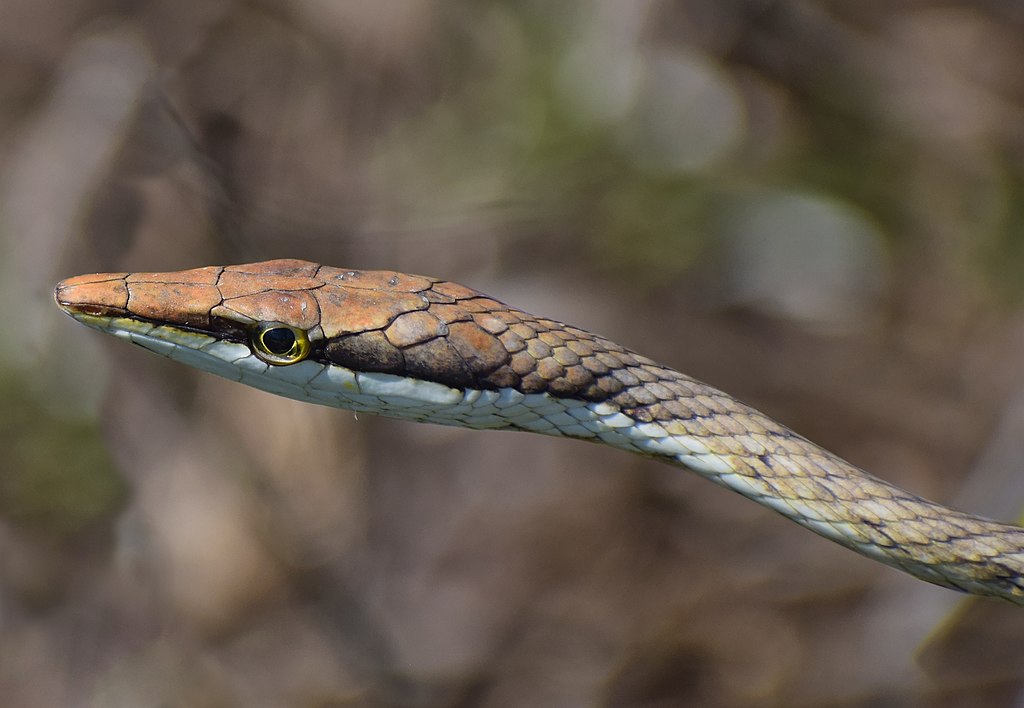
The vine snake stands as one of nature’s most remarkable examples of evolutionary adaptation, demonstrating how specific environmental pressures can shape a species over millions of years. Their specialized morphology, behavior, and hunting strategies showcase the incredible precision of natural selection. As we continue to study these masters of disguise, we gain valuable insights not only into reptile biology but also into the broader principles of evolution and adaptation. The next time you find yourself in a tropical forest, remember that what appears to be just another vine swaying in the breeze might actually be watching you with unblinking eyes—nature’s perfect illusion hiding in plain sight. In an era of unprecedented environmental change, the future of these specialized hunters remains uncertain, making our efforts to understand and protect them all the more crucial.

